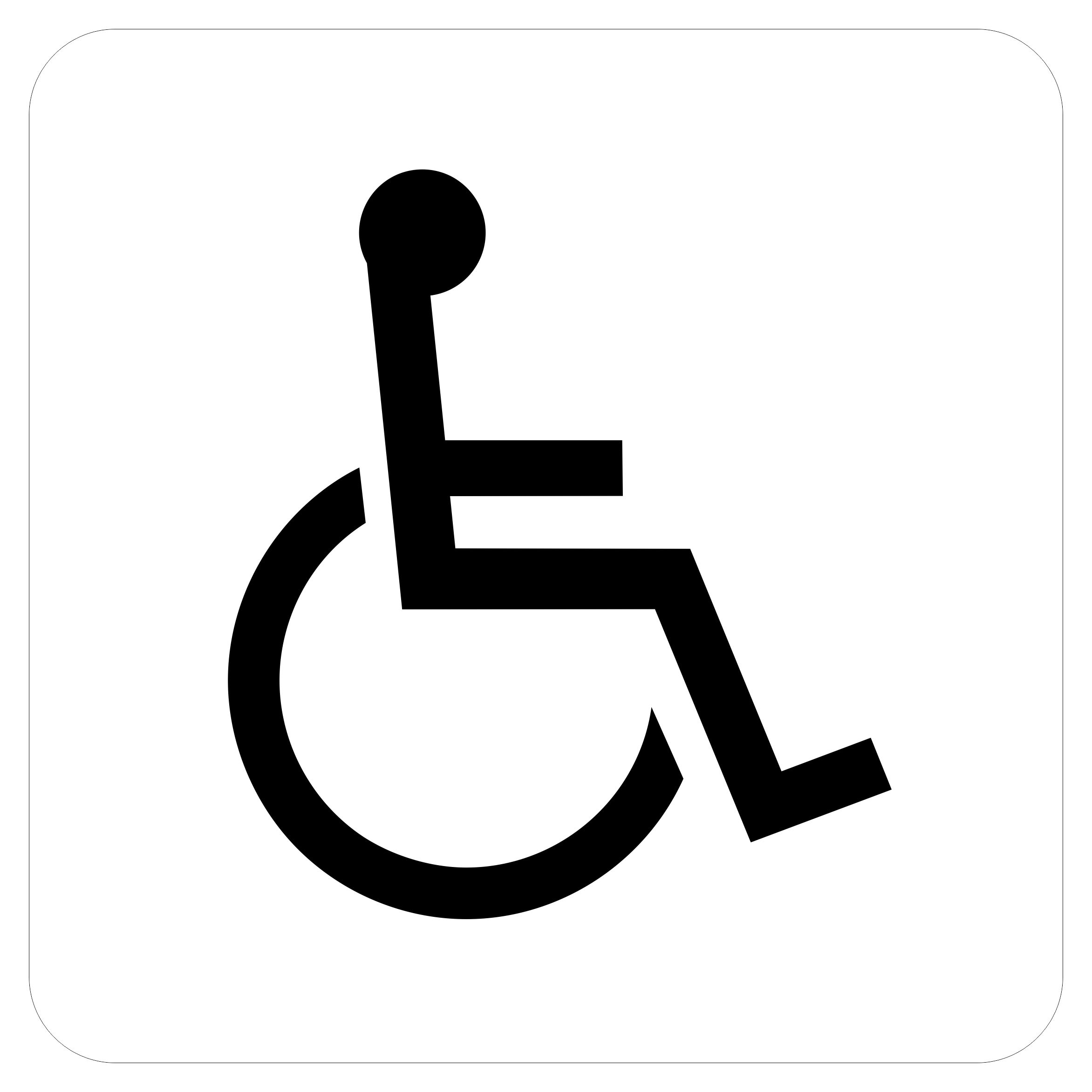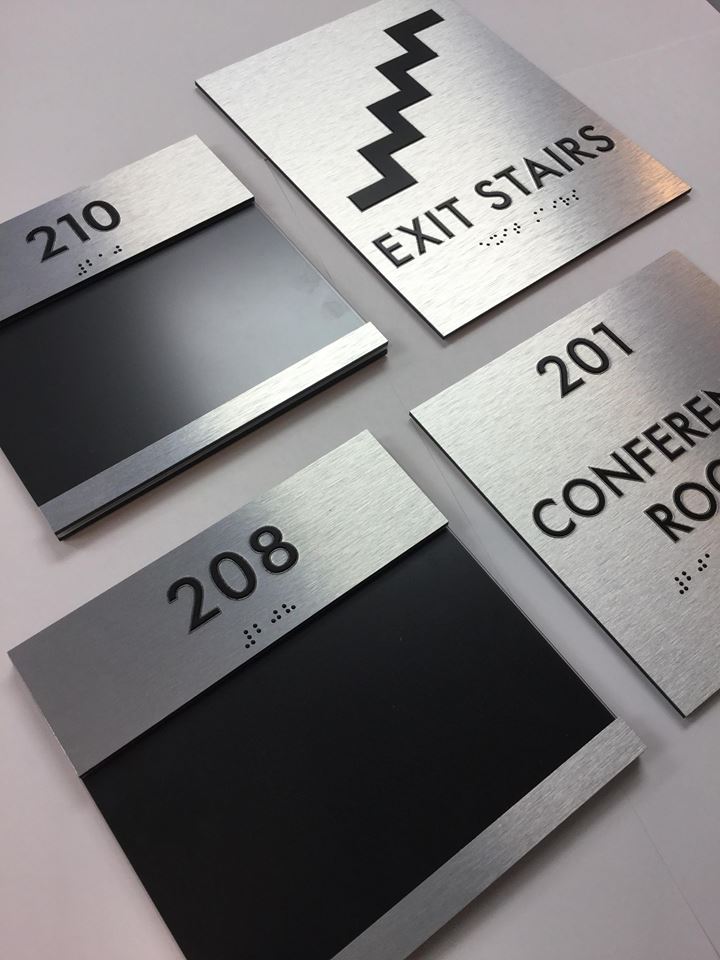Discovering the Trick Attributes of ADA Indicators for Boosted Accessibility
In the world of access, ADA indications act as silent yet effective allies, making sure that spaces are comprehensive and accessible for individuals with specials needs. By incorporating Braille and tactile aspects, these indications break obstacles for the visually impaired, while high-contrast color pattern and readable font styles deal with diverse aesthetic demands. Their calculated positioning is not approximate yet instead a computed effort to facilitate smooth navigation. Yet, past these attributes lies a deeper narrative about the evolution of inclusivity and the recurring dedication to developing equitable spaces. What much more could these signs represent in our pursuit of universal availability?
Importance of ADA Compliance
Ensuring compliance with the Americans with Disabilities Act (ADA) is essential for fostering inclusivity and equal gain access to in public spaces and work environments. The ADA, enacted in 1990, mandates that all public facilities, companies, and transport services accommodate people with handicaps, guaranteeing they enjoy the very same civil liberties and chances as others. Conformity with ADA requirements not only fulfills lawful commitments yet likewise boosts a company's credibility by demonstrating its commitment to variety and inclusivity.
One of the crucial elements of ADA conformity is the application of easily accessible signs. ADA indications are made to ensure that individuals with impairments can conveniently navigate through spaces and buildings.
Additionally, adhering to ADA regulations can minimize the risk of lawful repercussions and possible fines. Organizations that stop working to follow ADA guidelines might encounter claims or fines, which can be both harmful and monetarily difficult to their public photo. Thus, ADA compliance is important to fostering a fair atmosphere for every person.
Braille and Tactile Components
The unification of Braille and responsive elements into ADA signage embodies the principles of ease of access and inclusivity. It is normally put under the matching message on signage to make sure that individuals can access the info without visual help.
Tactile elements prolong beyond Braille and include increased symbols and characters. These parts are developed to be noticeable by touch, permitting people to identify room numbers, restrooms, departures, and other vital areas. The ADA establishes certain standards concerning the size, spacing, and positioning of these responsive elements to maximize readability and ensure uniformity throughout various atmospheres.

High-Contrast Color Pattern
High-contrast color design play a pivotal function in improving the presence and readability of ADA signage for individuals with aesthetic impairments. These schemes are vital as they maximize the difference in light reflectance between message and background, making certain that signs are easily noticeable, also from a distance. The Americans with Disabilities Act (ADA) mandates using certain color contrasts to suit those with minimal vision, making it a critical facet of compliance.
The efficiency of high-contrast shades hinges on their ability to stick out in different lighting conditions, consisting of poorly lit settings and locations with glare. Usually, dark text on a light background or light text on a dark background is used to accomplish ideal contrast. Black text on a white or yellow history gives a stark aesthetic distinction that aids in fast recognition and understanding.

Legible Fonts and Text Dimension
When thinking about the layout of ADA signage, the choice of readable font styles and appropriate text dimension can not be overstated. These elements are critical for making sure that indications come to individuals with aesthetic problems. The Americans with Disabilities Act (ADA) mandates that typefaces must be sans-serif and not italic, oblique, manuscript, extremely decorative, or of unusual kind. These needs help make sure that the text is conveniently understandable from a distance and that the personalities are distinguishable to diverse audiences.
The size of the text additionally plays Visit Your URL a crucial duty in access. According to ADA standards, the minimum message elevation need to be 5/8 inch, and it needs to enhance proportionally with seeing distance. This is especially crucial in public rooms where signage requirements to be checked out quickly and accurately. Uniformity in text size adds to a cohesive visual experience, helping individuals in navigating atmospheres efficiently.
Moreover, spacing in between lines and letters is indispensable to legibility. Ample spacing protects against personalities from showing up crowded, boosting readability. By adhering to these standards, designers can substantially improve accessibility, ensuring that signage offers its intended purpose for all individuals, no matter their visual capabilities.
Effective Placement Strategies
Strategic positioning of ADA signage is essential for making best use of availability and making sure compliance with legal standards. ADA standards specify that indications should be installed at an elevation in between 48 to 60 inches from the ground to guarantee they are within the line of sight for both standing and seated people.
Additionally, signs must be put adjacent to the latch side of doors to permit easy identification prior to entry. Consistency in sign placement throughout a center boosts predictability, lowering confusion and enhancing general user experience.

Verdict
ADA indications play an important duty in go to my blog advertising availability by integrating features that address the demands of individuals with disabilities. Integrating Braille and tactile components guarantees essential information is accessible to the aesthetically impaired, while high-contrast shade plans and clear sans-serif typefaces boost visibility across various illumination conditions. Effective positioning techniques, such as proper placing heights and critical areas, further help with navigation. These aspects jointly foster an inclusive atmosphere, highlighting the value of ADA conformity in ensuring equal accessibility for all.
In the world of ease of access, ADA signs serve as silent yet powerful allies, making certain that spaces are inclusive and navigable for people with impairments. The ADA, established in 1990, mandates that all public centers, employers, and transportation solutions accommodate individuals with impairments, ensuring they delight in the very same legal rights and chances as others. ADA Signs. ADA signs are made to make certain that individuals with disabilities can conveniently navigate through structures and spaces. ADA standards stipulate that indications ought to be mounted at a height in between 48 to 60 inches from the ground to ensure they are within the line of view for both standing and view website seated people.ADA indicators play an essential duty in promoting access by integrating features that address the demands of individuals with disabilities